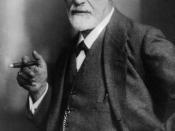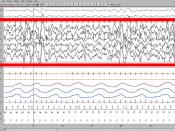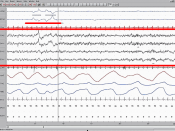Dreams A high school athlete can dream of advancing their career to college, or even professionally. A filthy rich man can dream he is poor and living in the slums. Author Naomi Epel believes that "Your unconscious knows things your conscious doesn't. It can be an alley with new insights" (Von Kreisler 143).
According to recent research, most dreams have been described as distorted reflections of our daily lives. They do not necessarily have to be symbolic pictures or unconscious wishes, as Freud believed, or random images caused by brain signals. Experts now believe that dreams are so closely related to our waking lives that we can use them to help organize and work out inner conflicts (Von Keisler 141). A Harvard neuroscientist, Robert Stickgold, Ph. D. and his colleague J. Allen Hobson, M.D. have created a new model of dreaming. Numerous sections of the brain aid in dreaming, but they have concluded that it is a bottom-up process which is triggered by a region called the pontine brain stem, or pons.
These pons, referred to as FTG's, or gigantocellular field of the tegmentum, begin to aid in the dreaming process when the brain goes into REM sleep. REM is referred to as rapid eye movement ("How to Build...").
In order for people to dream, they must be in a period of rest which they lose awareness of their surroundings. This is more commonly known as sleep. Once a person has fallen asleep, they will enter into the first of five stages of sleep. Stages one through four are usually termed as non-REM sleep with stages three and four also being referred to as delta sleep, due to the evidence of low frequency brain waves. It is said that non-REM sleep makes up about 80% of sleep and REM sleep...


